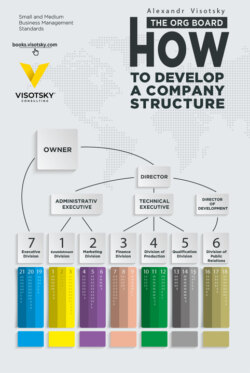Читать книгу The org board. How to develop a company structure - Александр Высоцкий - Страница 5
На сайте Литреса книга снята с продажи.
Chapter 4
Product and types of exchange
ОглавлениеI often see phrases such as, “a satisfied customer", "high-quality service", or "a customer who comes again and brings friends” in the wording of a company product. However, this phrasing doesn’t convey the product’s value, they only declare the intention to do a job well. When customers order services or buy products, they expect a specific thing. Ask yourself, when you go to the dentist, what do you want to get for your money? In any business, we strive to satisfy our customer. The value of that is obvious – customer satisfaction strengthens the company's image and helps ease our work. But the customer doesn’t pay for happiness, he pays for a specific value. The dentist gives us beautiful and healthy teeth, plus a comfortable treatment with long-lasting results. We don't pay him simply because we are “satisfied and will come back to him."
Another dangerous term in product wordings is "high-quality". It should only be used when an industry has particular standards that are generally known and understood. Otherwise the customer’s understanding of "high-quality" can be completely different from the employee’s understanding.
When I was consulting printing companies, I found that the company and its customers had different ideas on what was considered "high-quality printing". These differences created a lot of problems when orders were delivered to customers. When the VFP of the company was worked out and phrased as, “printing jobs performed on time and in accordance with ISO standards” [7], and helpful references were added to all customer handouts, a clear understanding between the company and customer was achieved. To determine whether the printed product conformed to the international standards, one just had to perform a few simple measurements – such as determining the variance of halftone in printing. Only you can determine what is acceptable and what is not acceptable for your business. In our consulting projects, I ask executives questions that guide them to defining what is an acceptable product and what is not. If it’s a retail company, then what selection of goods should it have? What is the acceptable delivery or processing time? Would you consider a partially completed order to be a final product? What technical standards will allow you to determine whether you have succeeded in producing the product? What orders will be rejected on the basis that our technology can’t provide a high-quality product?
To understand the company’s product, it is also important to understand what it is not. If McDonald's tried to please a different kind of customer and add menu items for them, they would end up losing the speed and efficiency they’re known for – and quickly start losing customers. You don't like the food from McDonald's? You are just not their customer. Their VFP is meant for another type of customer, and millions currently go to McDonald’s because they’re happy with it.
There are no absolute good or bad products. When one buys $20 sneakers from Walmart, they don’t expect them to withstand the same wear and tear, nor be a comfortable, as a new $100 Nike pair. Yet, both sell well and are in demand by different types of customers – each model makes their respective customers happy. It may be that Walmart sells more of their sneakers than Nike. Simple sneakers from Walmart is one VFP, Nike shoes is another one. It is important to understand what exact product we provide for our customers, and what we don’t.
7
ISO (the International Organization for Standardization) is an international standard-setting body. The goals of ISO are: to promote the development of standardization and its related activities in the world with the purpose of ensuring international exchange of merchandise and services, as well as to develop cooperation in the intellectual, scientific, technological and economic fields. One of the most famous standards is “ISO 9001:2011 – Quality Management System”. There is a whole family of standards for printing, in particular: ISO 12647 that describes specifics of managing printing processes.
